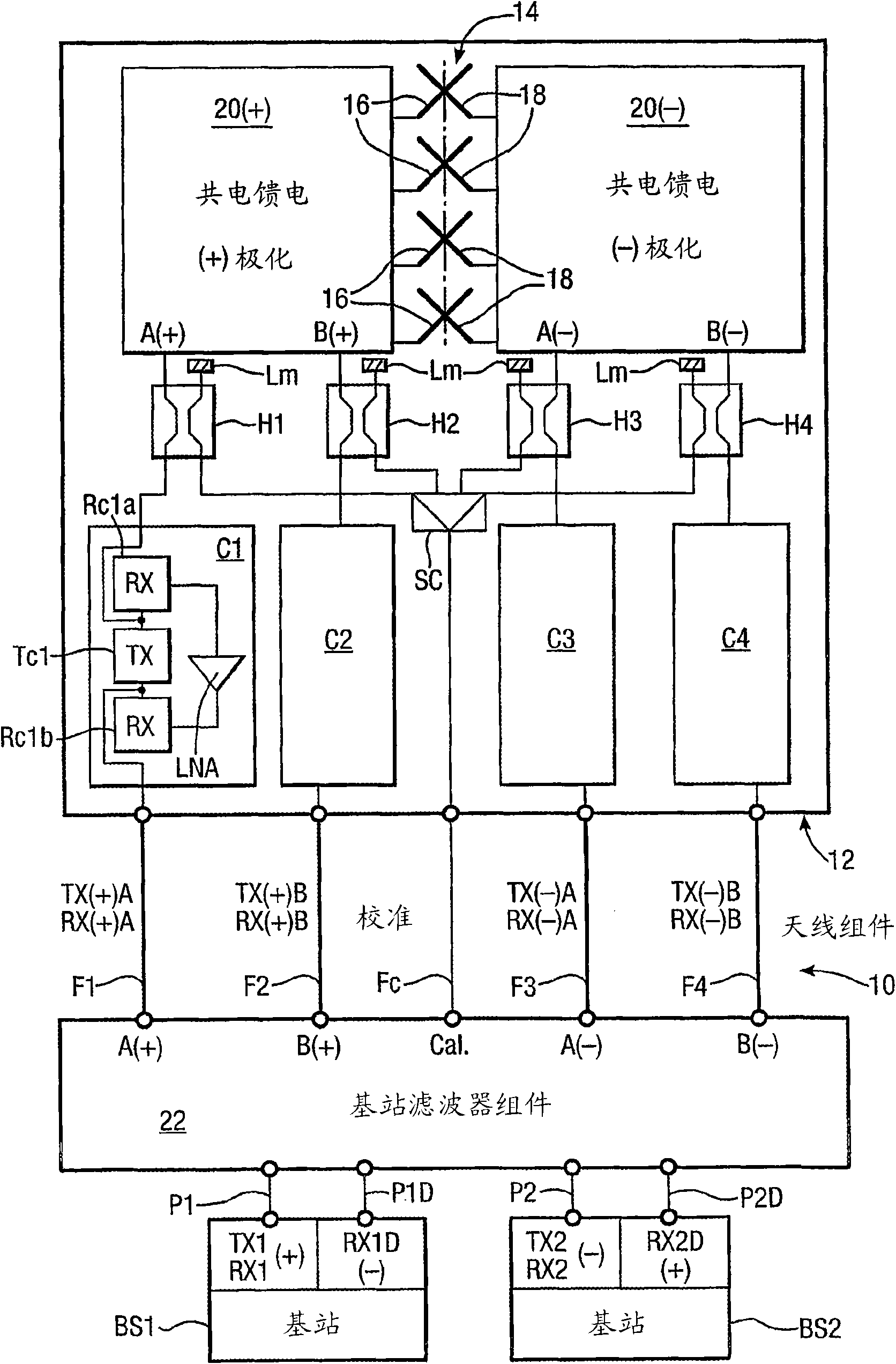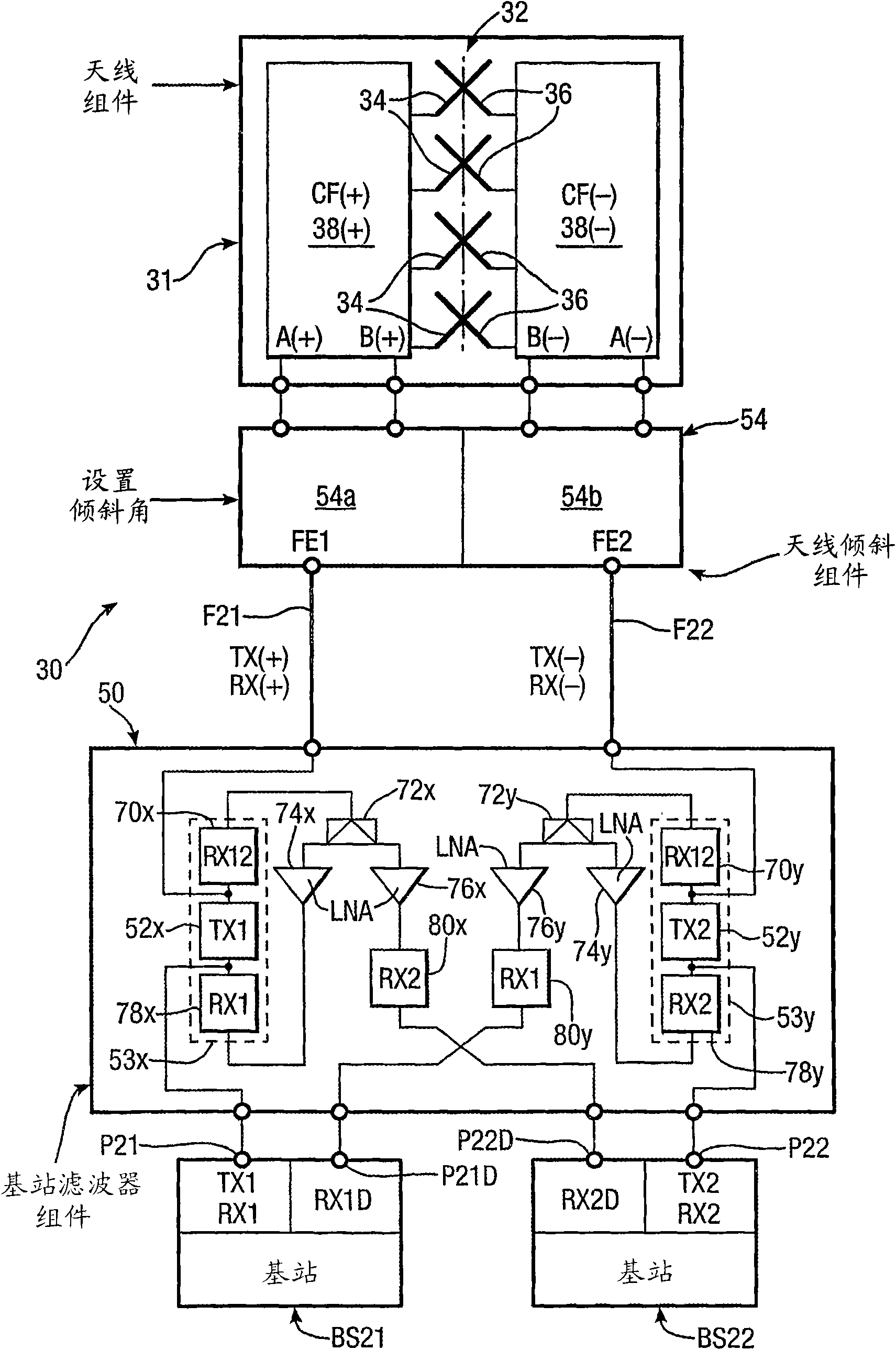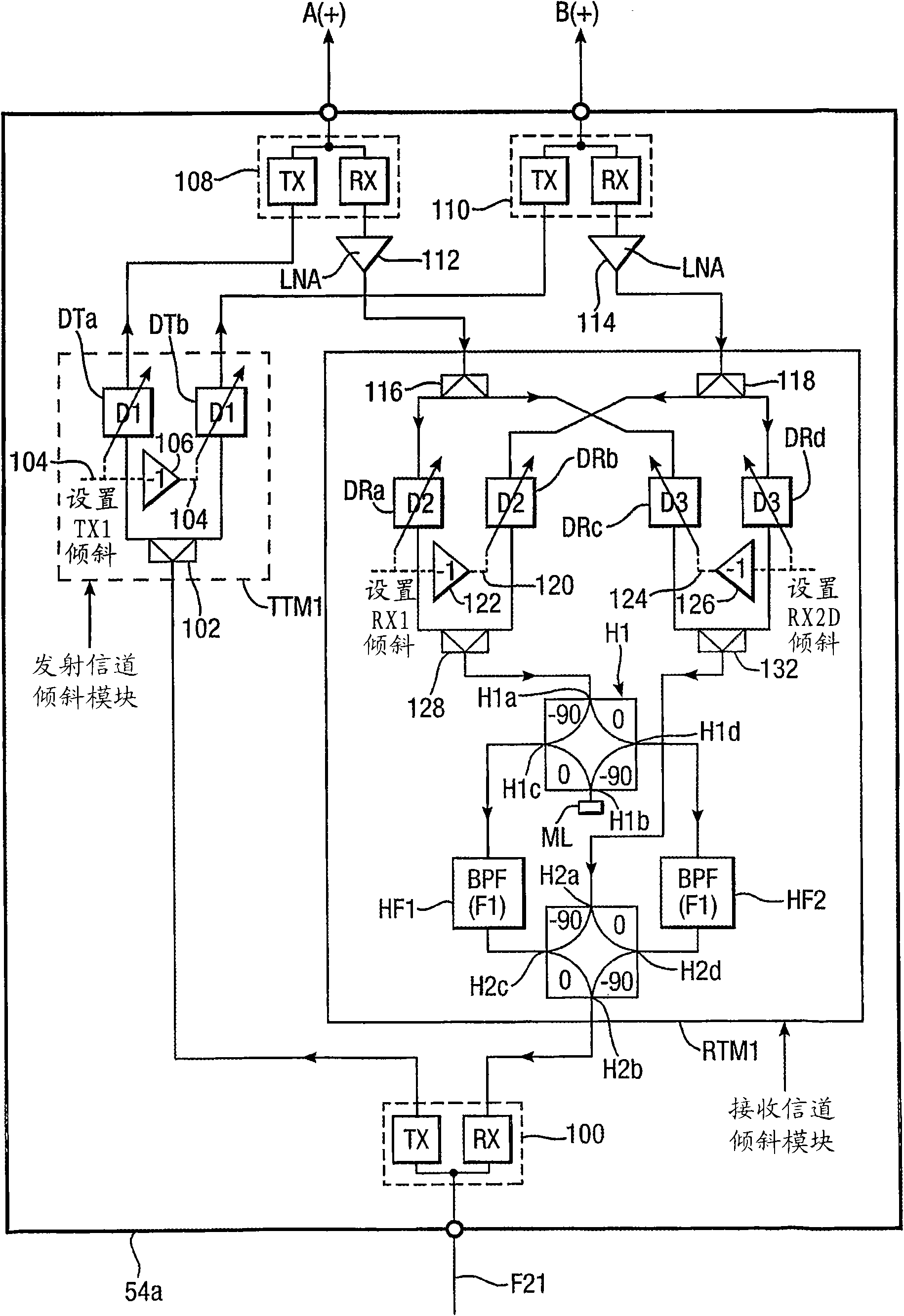Electrically tilted antenna system with polarisation diversity
An antenna system, polarization diversity technology, applied in diversity/multiple antenna systems, polarization/direction diversity, antennas, etc., to solve problems such as restricting the deployment of new locations or adding antennas
- Summary
- Abstract
- Description
- Claims
- Application Information
AI Technical Summary
Problems solved by technology
Method used
Image
Examples
Embodiment Construction
[0041] In this specification (unlike US nomenclature), "carrier" refers to the carrier frequency, ie the radio frequency signal on which it is modulated for telecommunication purposes, and "channel" is the channel of frequency and is practically synonymous with carrier. One or more carriers may be used by a single operator, who is a user of a base station that provides mobile telephone communication services, or by two or more operators. Multiple carriers do not have to be allocated to the same cellular radio system. Paired transmit and receive signals are denoted by TX and RX respectively with the same numerical suffix, eg TX1 and RX1 or TX2 and RX2. A numerical suffix of 1 or 2 here indicates a first or second transmit or receive carrier frequency and is associated with a first or second operator or base station. Polarization diversity transmit and receive signals are denoted by the suffix D, for example in TXD, RXD, TX1D, RX1D, etc. Uplink refers to the transmission of si...
PUM
 Login to View More
Login to View More Abstract
Description
Claims
Application Information
 Login to View More
Login to View More - R&D
- Intellectual Property
- Life Sciences
- Materials
- Tech Scout
- Unparalleled Data Quality
- Higher Quality Content
- 60% Fewer Hallucinations
Browse by: Latest US Patents, China's latest patents, Technical Efficacy Thesaurus, Application Domain, Technology Topic, Popular Technical Reports.
© 2025 PatSnap. All rights reserved.Legal|Privacy policy|Modern Slavery Act Transparency Statement|Sitemap|About US| Contact US: help@patsnap.com



